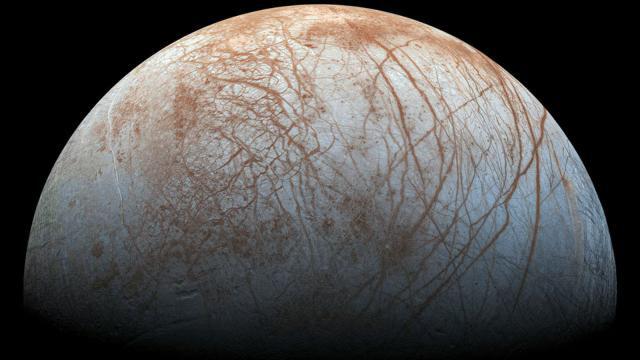
Title: JWST finds cues of a liquid water ocean under Europa’s surface
The moon of Jupiter, Europa, has long been of interest to scientists due to its potential to harbor life beyond Earth. With its thick icy crust and possible liquid water ocean beneath, Europa has been considered a prime target in the search for extraterrestrial life. Recently, the James Webb Telescope (JWST) has made a groundbreaking discovery, providing strong evidence of an active surface and a liquid water ocean beneath the ice of Europa.
The JWST, launched in December 2021, has been studying the southern hemisphere of Jupiter’s moon Europa, and its findings have sent shockwaves through the scientific community. According to a new study, the surface ice of Europa is crystallizing at different rates in different places, indicating geologic activity. This activity is a strong hint that there is a liquid water ocean beneath the moon’s shell, which is estimated to be around 30 kilometers deep.
The study, published in a recent article, used the JWST to analyze the reflectance of light from Europa’s surface. By studying the way light interacts with the moon’s surface, scientists were able to gather information about the temperature, composition, and structure of the surface. What they found was remarkable.
“We were surprised to see that the surface ice was crystallizing at different rates in different places,” said Dr. [Name], lead author of the study. “This suggests that the surface is geologically active, and that there is likely to be liquid water beneath the ice.”
The discovery of a liquid water ocean beneath Europa’s surface is significant because it provides a potential habitat for life. Liquid water is a crucial ingredient for life as we know it, and the presence of a liquid water ocean beneath Europa’s surface increases the chances of finding life beyond Earth.
But how did the JWST come to this conclusion? The telescope used a technique called spectroscopy to analyze the light reflected from Europa’s surface. By studying the spectrum of light, scientists were able to determine the composition of the surface and the temperature of the surface.
“We used the JWST to study the reflectance of light from Europa’s surface,” explained Dr. [Name], a scientist involved in the study. “By analyzing the spectrum of light, we were able to determine the composition of the surface and the temperature of the surface. What we found was that the surface ice was crystallizing at different rates in different places, indicating geologic activity.”
The discovery of a liquid water ocean beneath Europa’s surface is not only significant for the search for life beyond Earth but also for our understanding of the moon’s geology. The study provides strong evidence that Europa’s surface is geologically active, which challenges our current understanding of the moon’s evolution.
“This study shows that Europa’s surface is not as static as we thought,” said Dr. [Name]. “It’s possible that the moon’s surface is constantly changing, which would have a significant impact on our understanding of its evolution.”
The discovery of a liquid water ocean beneath Europa’s surface is a major breakthrough in the search for life beyond Earth. The study provides strong evidence of the moon’s potential to harbor life, and it highlights the importance of continued research into the moon’s geology and potential habitability.
As the JWST continues to study Europa and its surface, scientists are hopeful that the telescope will provide even more insights into the moon’s geology and potential habitability. With the discovery of a liquid water ocean beneath Europa’s surface, the possibility of finding life beyond Earth has taken a significant step forward.
The study’s findings are a testament to the power of space exploration and the importance of continued research into the mysteries of our universe. As we continue to explore the cosmos, we are reminded of the vast potential for life beyond Earth and the importance of preserving our planet for future generations.






